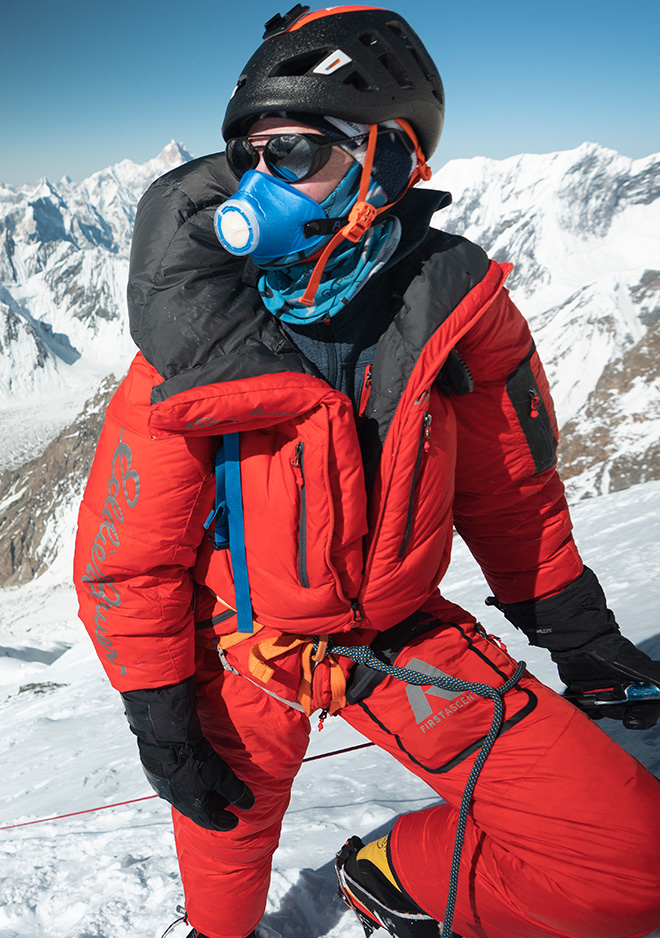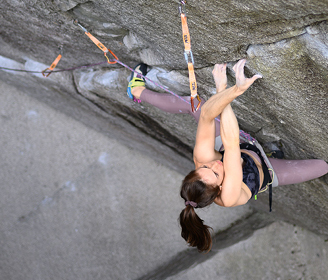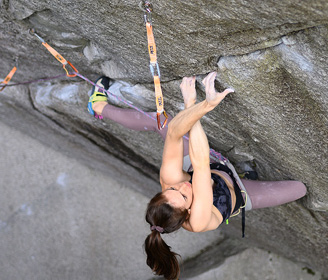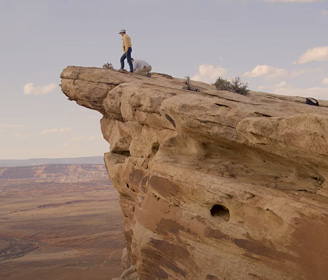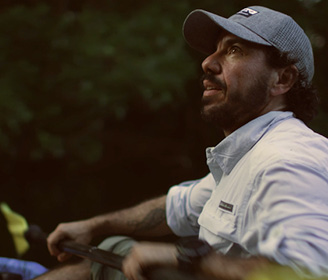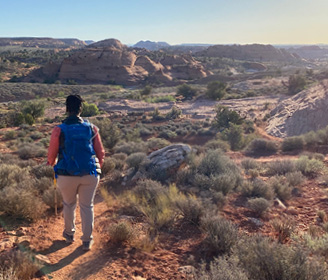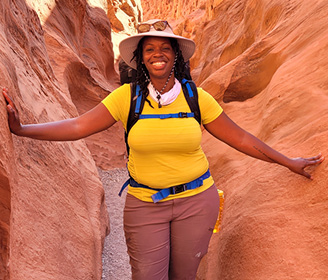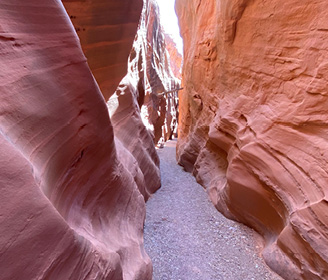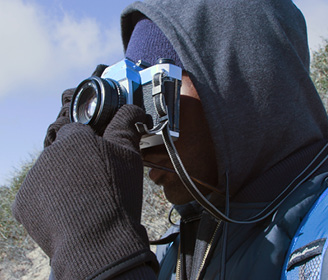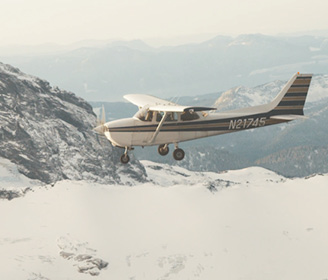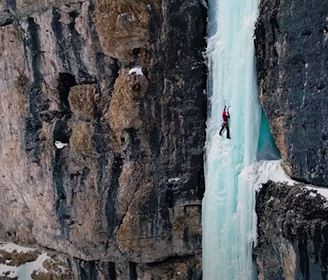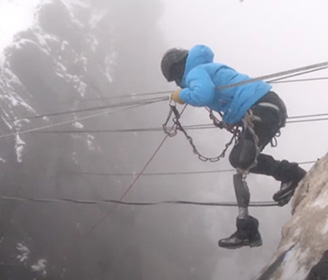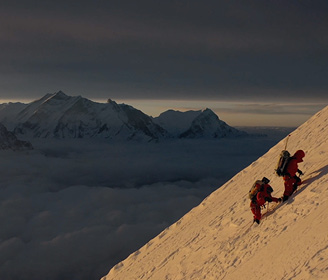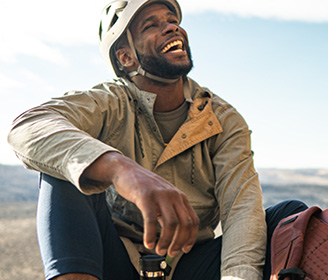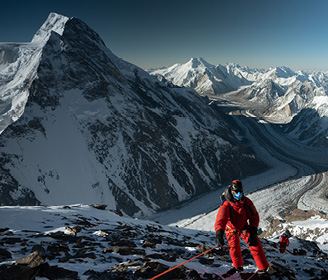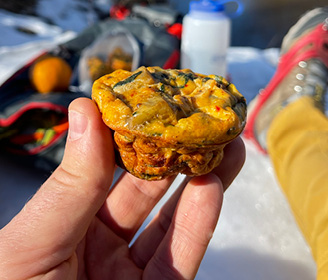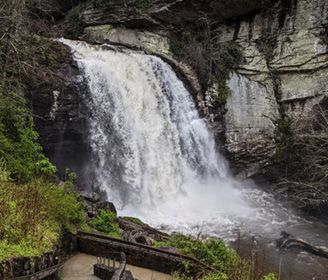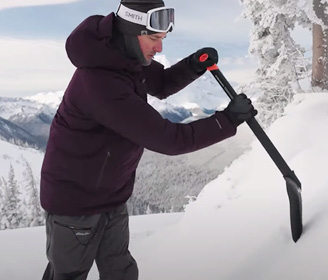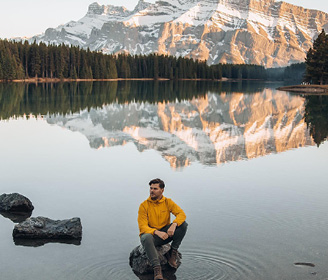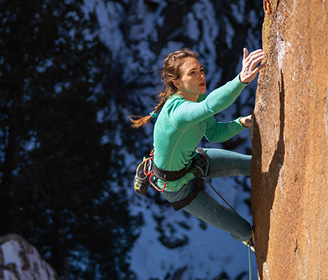Ever asked the question, where in the world is K2? Or wondered how many people have climbed K2? Well, Eddie Bauer Alpine Climbing Guide Adrian Ballinger who successfully summited K2 without the use of supplemental oxygen is here to answer the internet’s most frequently asked questions about K2.
Watch the video above!
Meet The team

ADRIAN BALLINGER
Eddie Bauer Alpine Climbing Guide (AMGA/IFMGA)
In his two decades as a professional guide, Adrian has led more than a hundred clients to the summits of several 8000-meter peaks, including Everest, Lhotse, Manaslu, and Cho Oyu. He’s personally summited Everest eight times.
Where is K2?
It’s a great question. K2 is the second tallest mountain in the world, and it’s in the Karakorum mountain range on the border between Pakistan and China.
How high is K2?
I should have prepared for this interview. In meters, it’s 8611 meters tall. The tallest mountains in the world we always talk about in meters, not feet. I climbed it last year, I’ve already forgotten how tall it is. So in feet K2 is 28,251 feet tall. It’s up there, second tallest in the world. All right!
How did K2 to get its name?
So K2 to I don’t know a lot of the specifics, but it’s like it’s so survey name. So when surveys were originally being done of the Himalaya and the Karakoram mountains, mountains were often… No one knew this was the second tallest mountain in the world, no one knew it was going to be very important or have a lot of history, and so mountains just got the name and a number, a letter and a number. So K2 for Karakoram, and two because of its position in the grid. It’s also got some other local names and things like that that have come in in more recent times, but K2 is the name that both the local Balti people and foreign climbers use.
How many people have climbed K2?
These are great starts. This is another one that high altitudes has made me forget. It’s not that many, let me looK it up again. 306 people have summited K2. Take that with a grain of salt because obviously it’s on the internet. But I know it’s less than 400, so let’s go with that.
Why is K2 so dangerous?
You Know, there are a lot of things that make K2 dangerous. It’s funny, I’ve been climbing for 25 years, I’ve been lucky enough to summit Mount Everest eight times, but I kind of avoided K2 for a lot of my career because of its reputation. Unfortunately, over 20% of people who have summited the mountain have died. That’s the fatality rate about 20%, one in five, which is really pretty horrific. The things that make it so dangerous, of course it’s extreme high altitude. Second, the location where it is in Pakistan is much further north, than the other 8000 meter peaks in Nepal and Tibet, and it’s known for much worse weather because of its sort of Northwestern position. So really big storms, lots of wind and unpredictable weather. And then finally, there are no easy routes on the mountain, all the climbing is really technical. And all of this sort of commonly climbed or attempted routes go under something called the bottlenecks seracs. And the bottlenecks serac is this huge hanging piece of ice. I mean, it’s huge, it’s hard to imagine it’s the size of a town, you know, weighs millions of tons, and as that piece of ice shifts and moves, it drops pieces anywhere from microwave size to small cabin size down the face of the mountain. And if you’re climbing the mountain, it’s impossible to avoid those blocks of ice on some sections, especially going through this bottleneck, and unfortunately, that’s been the cause of a lot of fatalities over the years.
How long does it take to climb K2?
I kind of feel like I’ve been climbing K2 all my life, you know, I’ve built my skills over two decades, climbing progressively taller and taller and more difficult mountains around the world to be ready for K2 . The actual expedition itself though was about two months long. So I and two of my Eddie Bauer teammates Carla Perez and Topo Esteban Mena went last summer 2019, and we spent two months in Pakistan. That’s everything from traveling across the country to trekking into the base camp to acclimatizing for a number of weeks and building four camps progressively higher on the mountain, and then finally, when our bodies are rested and we’ve built enough red blood cells to be able to survive at 28,000 feet without supplemental oxygen, then we make a final attempt to the summit. Then after alight you need to clean everything off the mountain, we didn’t want to leave any camps behind, any trash, any human waste, so everything gets pulled off the mountain, taken back to base camp and then tracked back out of the mountains before we finally get to fly home.
Who was the first woman to climb K2?
That’s another great one, and I’m gonna look it up. Again, according to the internet, but this sounds right to me, the first woman to summit K2 was a Polish woman named Wanda Rutkiewicz. I bet am saying that name wrong. And …. that sounds right to me.
How far is K2 from Mount Everest?
Shoot, I’m gonna be living on the internet today. It’s actually, it’s quite far. We think of all the 8000 meters being really tightly packed together, basically on the border between Nepal and Tibet, but there’s a group of 8000 meter peaks in the Karakoram Range of Pakistan and considering how different their weather is, and also the fact that we climb them in a different season while we climb in Nepal and Tibet in the spring and fall we climb in Pakistan in the summer, I’m guessing it’s pretty far away. I’m gonna say 1000 miles. Let me look. 817 miles as the crow flies from K2 to Mount Everest. I love the internet.
Is there a K1 one or a K3?
That is such a good question. There has to be, but I don’t know them specifically or what they’re famous for, but I know there’s like, you know, there are other famous K mountains in the Karakoram close to K2 to like K7, So K1 is Masherbrum an incredibly beautiful 25 and a half thousand foot tall peak close to K2, Masherbrum! one of the best mountains in the world, and K3 the mountain is a Gasherbrum IV, another one of the 8000 meter peaks and also very close to K2. Look I’m learning something through all of this or at least remembering something.
Is K2 harder to climb than Mount Everest?
That’s a really great question. K2 is the much more difficult climb technically, loads of the climbing is like steep ice climbing, steep rock climbing, where you’re using your hands or your ice tools as well as your feet, whereas Everest is a little bit lower angle, so the climbing is much more difficult on K2. I also felt like the climbing was much more randomly dangerous on K2, it would have been a lot easier to get myself killed on K2, because the things that kill you on K2 like the bottleneck is uncontrollable. It doesn’t matter how good a climber you are or what great teammates you have around you if the ice falls it kills you, and that’s it. On Everest the danger really comes from the extreme high altitude that last 500 feet and being blacked out not able to make good decisions, but I had a great team around me helping to keep me from getting myself killed up there on that final few hours of summit push. So for me, K2 felt much more dangerous than Everest, but Everest felt harder than K2. Both of them I feel incredibly lucky to have kind of gotten away with to a climbed and come home safe.
Is oxygen needed to climb K2?
Great question. 95% or more of all ascends on Everest, just like K2 have been done with supplemental oxygen, so the vast majority of people need or want oxygen on their K2 climb, but it is physiologically possible to summit K2 Without supplemental oxygen, you’re much slower, it’s much more painful. I think it takes years, more experience and training to be prepared for and able to kind of instinctually climb even when your brain isn’t working very well anymore, and then it takes a lot of work in terms of fitness, and of course, a lot of patience with acclimatizing and building the red blood cell count that you need to survive at 28,000 feet without oxygen, but it is possible and both Carla and I were successful last summer summiting and getting off the mountain without supplemental oxygen. And as you can tell, I’ve lost some brain cells, I’ve forgotten a lot of facts about K2, but I’m still here.
How many people climb K2 every year?
You know, K2 is a really interesting mountain because it’s so challenging and there’s so much random risk, people go to K2 every single year and attempted it, but two out of three years there’ll be zero summit’s, no one will get on top of the mountain either because of terrible weather, avalanche conditions or ice falls and accidents and things like that. And then every three years or so on average, there will be one good year, where a number of climbers will summit. 2019 last year when Carla and I went was a really unusual year because double the number of climbers of any previous season were attempting we’re almost 200 climbers on the mountain, as compared to previous seasons of 70 or 80 climbers. But of those 200 climbers 180 went home, considering the conditions too dangerous this year or not wanting to wait for changes on the mountains having to do with avalanche risk, and when we finally got a “perfect summer window,” there were only about of 20 of us left actually attempting the mountain and going to the top so it was a really special, wonderful summit day despite a busy mountain through the season.
How did K2 form?
Wow, that’s taking me back to like, high school Geology. I have no idea I guess continental plates like hitting each other, causing uplift, which form the mountains but… Let’s see, India drifted away and moved northwards and collided into Asia, yes! giving rise to the tallest mountains in the world. Am saying I got that one.
How do you train for K2?
You know, two or three important pieces. First and foremost and the piece that I think is getting forgotten by too many, the most important way to train for K2 is to climb other smaller mountains first over a period of years or decades. K2 is so dangerous,20% fatality rate one in five, don’t come home. It’s just not worth going there and taking that risk if you haven’t spent years building experience and also being sure that you’re that passionate about the sport and the activity, that you’re willing to take a 20% risk of getting killed up there. So decades of climbing experience on smaller mountains, with a company like mine Alpenglow Expeditions, we guide mountains all over the world, it’s a great way to build experience to go towards that kind of dream Peak you might have out in the distance. Then second of all, cardio training is the most important thing you can probably do for yourself in terms of actual physical training. So probably 80% of my training was running back country skiing, road biking, sports like that really long, low intensity to actually build, yeah, endurance, it takes years and that’s the next with more power of stuff, so actual like, you know, box steps, lunges, weighted workouts, muscular endurance stuff, core, upper body, thinks for actual climbing, but it definitely is a process of years to build those two sides experience and actual physical ability.
Who was the first to summit K2?
You guys love history and I’m still terrible about it. You know, I know the original route on … The most common route on the mountain is called the Abruzzi route but I actually don’t think he was … First I’m gonna look I love this, I wonder if other athletes about their favorite sports had to go to Google so much. So, Italian expedition 1954 by the Abruzzi Spurs for some of the routes named after Abruzzi but it were two climbers summited Lino Lacedelli and Achille Compagnoni, and I apologize so much for my terrible Italian accent or ability to say names, but 1954, the Italians K2 is really considered like the Italian mountain, because they put so many of these early expeditions into place, and we’re really passionate about trying to climb the second tallest mountain in the world.
Why climb K2?
I mean, that is the eternal question, and if I could answer it, I think it’s really hard, I would imagine different people’s reasons are really different. For me, I found being in the tallest mountains in the world, Kind of challenged me, not only physically, but also mentally in like really difficult decision making and also emotionally in terms of being really scared and suffering a lot and having a lot of uncertainty. And I haven’t found really many other activities in my life that combine those three things, physical, mental and emotional challenge into one activity. And I think the thing that makes big mountains so special is the unknown ,the uncertainty, most times you go there you fail and you have to keep taking small steps forward each day of an expedition, even when there’s no light at the end of the tunnel, no hope, things seem impossible, and I thrive on that kind of challenge and feeling. And then for me personally, why K2 instead of some other tall mountain, two reasons. One it is crazy, crazy beautiful. It’s like no other mountain in the Karakoram mountain ranges like no other mountain range on the planet in terms of how jagged and steep and technical all of the peaks are, it has inspired me for decades. And then the second reason is, after summiting Everest without oxygen, that was like, a peak experience for me in my life that I never knew if I could do but I have dreamt about for decades and was able to succeed, but in some ways I wondered afterwards if it was almost a fluke, it was a mountain I’d spent 13 years in a row on 13 seasons, I knew everything about it, I knew exactly what to do to be successful. And I barely squeaked through. And so after that, I really wanted to try another peek almost as tall to see if Everest had just been a fluke or if I’ve learned something through all these years and decades of experience and training, that allows me to, to be successful up there. And so K2 between its inspiration for me and being second tallest was just the place I had to go.
Has K2 to been climbed in the winter?
K2 is the last of the 8000 meter peaks or 14 peaks over 8000 meters or over 26,000 feet, they’re the 14 tallest mountains in the world. K2 is the last one, the only one left not to have yet been climbed in winter. So even in a regular season, like I said only one out of every three years or so do people summit at all in the regular season, and then to add winter conditions imagine, you know, winds over 50 miles an hour all the time and regularly 200 miles an hour, and imagine negative 40 degree temperatures, whereas I climbed in negative 20 degree temperatures. It’s almost impossibly difficult, and so it still stands is one of the great tests out there.
How cold is K2?
Its really cold . Kinda unwritten rule for me climbing without supplemental oxygen, I don’t go if it’s cold in the negative 20 degrees and this wind of more than like 25 or 30 miles per hour, but that’s still really cold. But that’s summit day. Lower on the mountain it can actually, you know, heat was an issue. We had such a warm season and the sun was so intense this year, I think we’re really seeing the effects of climate change in the Karakoram that they were actually rivers opening up on the glacier down close to Base camp. They were making it really difficult to even get across the glacier to the steep climbing itself. It was also causing loads of wet slide, hot avalanches on the lower half of the mountain, so it’s really a place of extremes, extreme cold and extreme heat.
How high is K2 base camp?
Without looking I’m gonna say around 16, maybe almost seven, yeah, I’m gonna say around 16,000 feet a little lower than Everest base camp. And that height is really important ’cause you need to be at a height where you can recover. So if you go up and climb and suffer a lot and get pretty sick, which is a part of acclimatizing then you need to be able to come down and recover. So 16,000 for a base camp became almost normal to us after a period of weeks and it might have been 15, It might have been 17 but right around that range. And if you ever get to go there, I highly recommend it. It is incredibly beautiful. One of the coolest tracks on the planet.
Does K2 have snow year round?
It’s a great question. Yep! so there are permanent glaciers and glaciers are made up of snow that’s been compacted to such a degree that its density is reached a level of at least point eight it starts to flow like water and that’s why glaciers actually by definition move, and that’s what creates the big cracks the crevasses and also things like ice falls or like the bottlenecks serac it’s because the glacier is moving the pieces have to fall off of it and fall down the mountain when it goes over a cliff. So there is yet hundreds and hundreds if not thousands, and thousands of feet of snow on the mountain, especially the upper mountain where the glaciers are, at base camp you’re still gonna have snow year round, you know, in the summer, the warmest period when we were climbing this year, there would be times when there was not actually snow on our tents or right around our tents but there is still ice and glacier all around us. So year around snow even all the way down at the base camp.
What is the K2 bottleneck?
You know, I’ve mentioned it in a few of my different answers especially around risk and what makes it dangerous and the fatality rate and all these things. The bottleneck is just a climbers name for this area on the mountain where a huge ice cliff, which is constantly dropping pieces, making it really dangerous, those pieces are funneled through what looks like an hourglass shaped couloir or gully that you have to climb up so you’re climbing sort of 50 to 60 degrees, snow and ice up underneath the huge serac and, and it’s shaped like a big funnel. So anything that falls off the big ice cliff funnels through this section of really technical steep climbing above 28,000 feet. So it’s called the bottleneck ’cause climbers inevitably get slowed way down in that area, because it’s so steep and technical and it’s also 28,000 feet, so if you’re climbing without oxygen, you’re incredibly slow. I ended up without oxygen, I think spending almost six hours underneath the bottlenecks serac in this gully and that’s a lot of time to be afraid of something falling down from above you.
Is it safe to travel in Pakistan?
It’s a great question. Pakistan this was my first time last summer to Pakistan and it excites me so much to go back. There are so many trips I wanna do to Pakistan as a tourist, I wanna visit more of the cities and the towns, the culture and the experience and the food was incredible, and then the trekking is unreal. The ski potential, back country skiing peaks in the Karakoram is like untapped and unbelievable. And then there’s incredible rock climbing on things like the Trango Towers and lots of new valleys are being discovered for rock climbing, and then there’s the tall mountains of the Karakoram. So I wanna do so many more trips, and I wanna encourage people to go so much, of course, danger, you know, really political danger and risk from potential terrorist acts are something that certainly are on the minds of anyone when they traveled to Pakistan. My experience was it felt very safe. In Islamabad there were certain areas, that it’s not recommended you go to and some protocols and increase security at airports and hotels where terrorists stay. And so that did make me aware that we are still in a dangerous and at times unstable region, a region I need to learn a lot more about to really understand the politics of that. But it is something I was aware of in Islamabad the capital city . Once I flew to Skardu and was in the region of the country where the mountains are called Baltistan, I felt incredibly safe and welcomed and didn’t follow any sort of specific criteria for areas to avoid or times not to travel or anything like that, so I really felt like the mountain areas of Pakistan were very safe and incredibly welcoming to tourism. So I really, you know, obviously we’re in quarantine now, you see I’m in my house. It’s Coronavirus time but when time allows for international travel again, I can’t recommend it more highly.
Why is K2 an important mountain?
I’d say because it’s the second tallest in the world, it’s much, much more technically difficult than Everest and its fatality rate is kind of lent the nickname “The savage mountain.” It’s truly one of the most dangerous mountains on the planet. And that creates an alert all around it that I’ve dreamt about for 25 years since I started climbing, much smaller peaks and so I think it holds that special place for all alpinists and climbers around the world,. The mountain to me really feels like a pinnacle of my career and dreams around mountains and climbing and high altitude, and for 25 years I dreamt about it as I was building experience on other mountains, including 13 years on Mount Everest, until finally I felt ready with the right teammates my Eddie Bauer team to go in and attempt it. And it really was everything I had dreamt of it was so challenging, it felt really dangerous at times, the outcome was totally unknown, in fact, I was certain it was impossible for a large part of the expedition. The lessons learned and how grateful I am that we were able to stand on top and all come home safely, It’s unforgettable for me.

